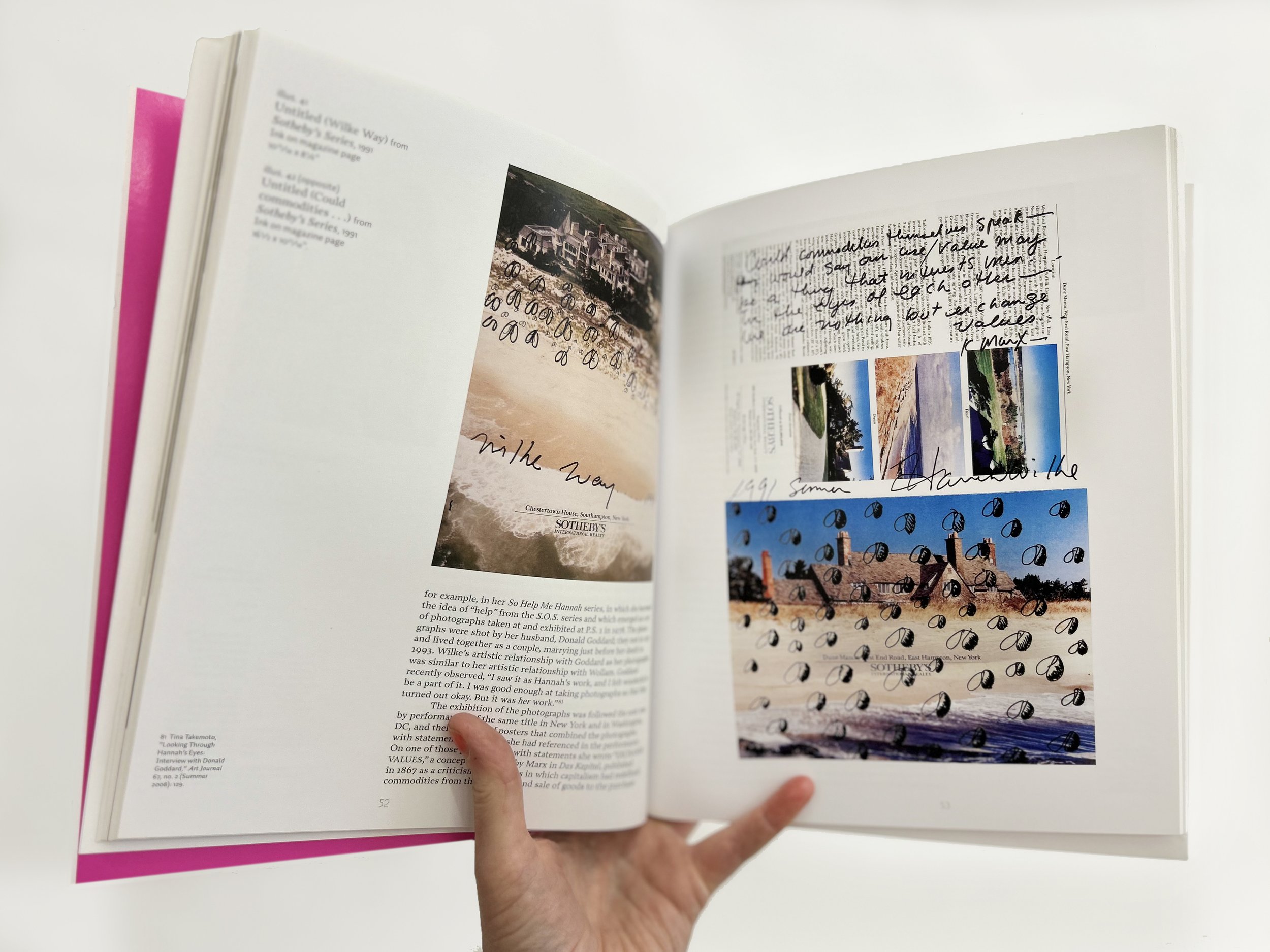 Image 1 of 8
Image 1 of 8

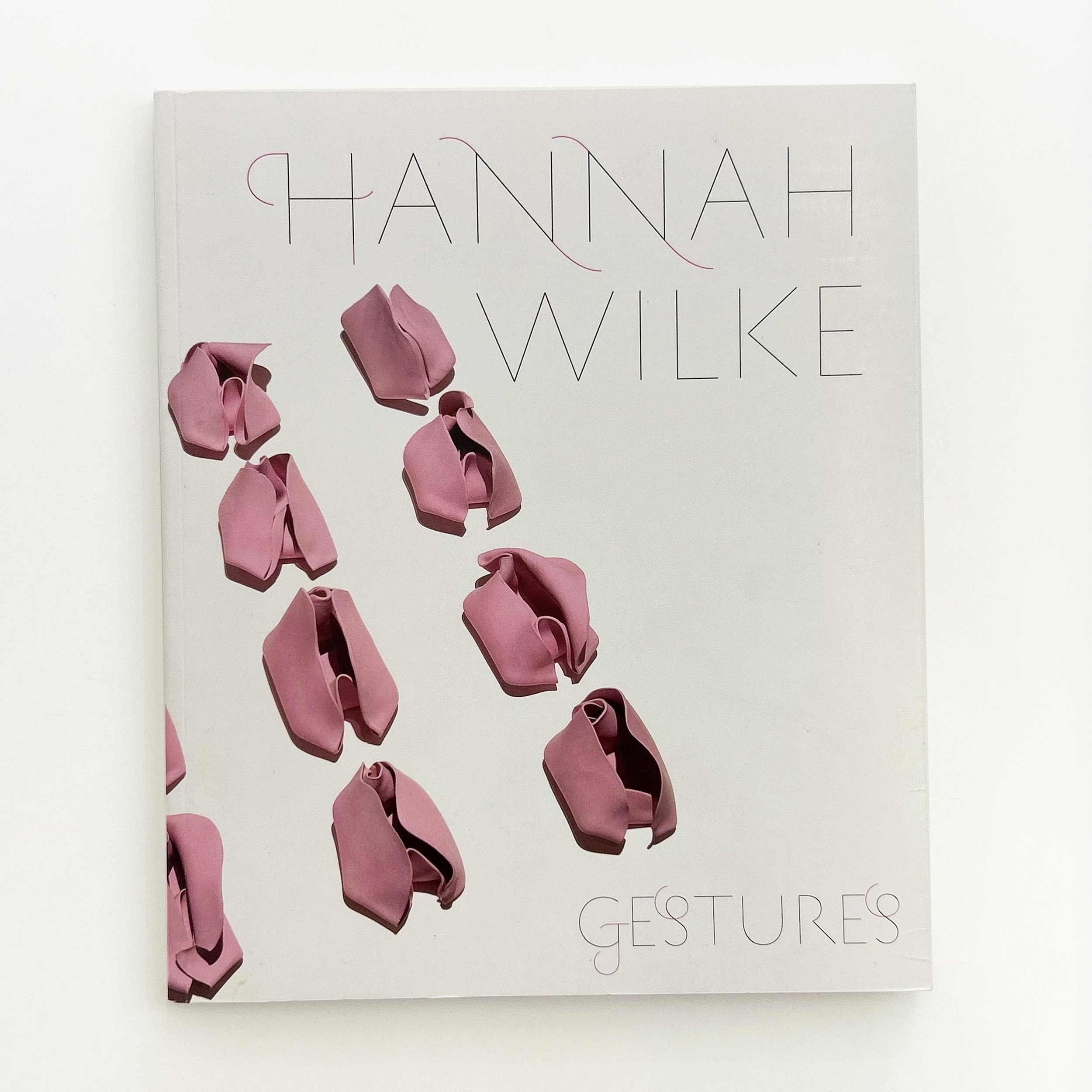 Image 2 of 8
Image 2 of 8

 Image 3 of 8
Image 3 of 8

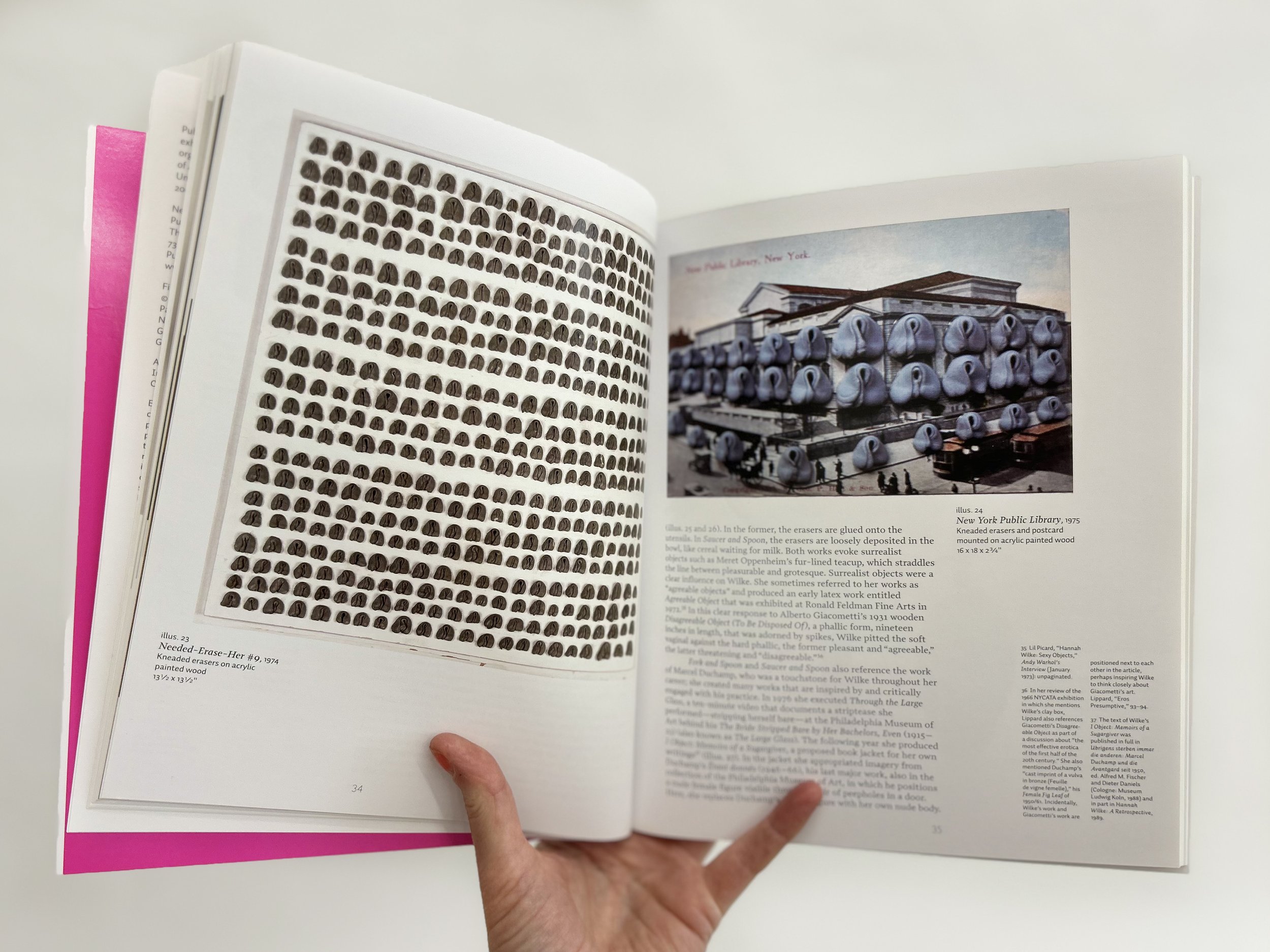 Image 4 of 8
Image 4 of 8

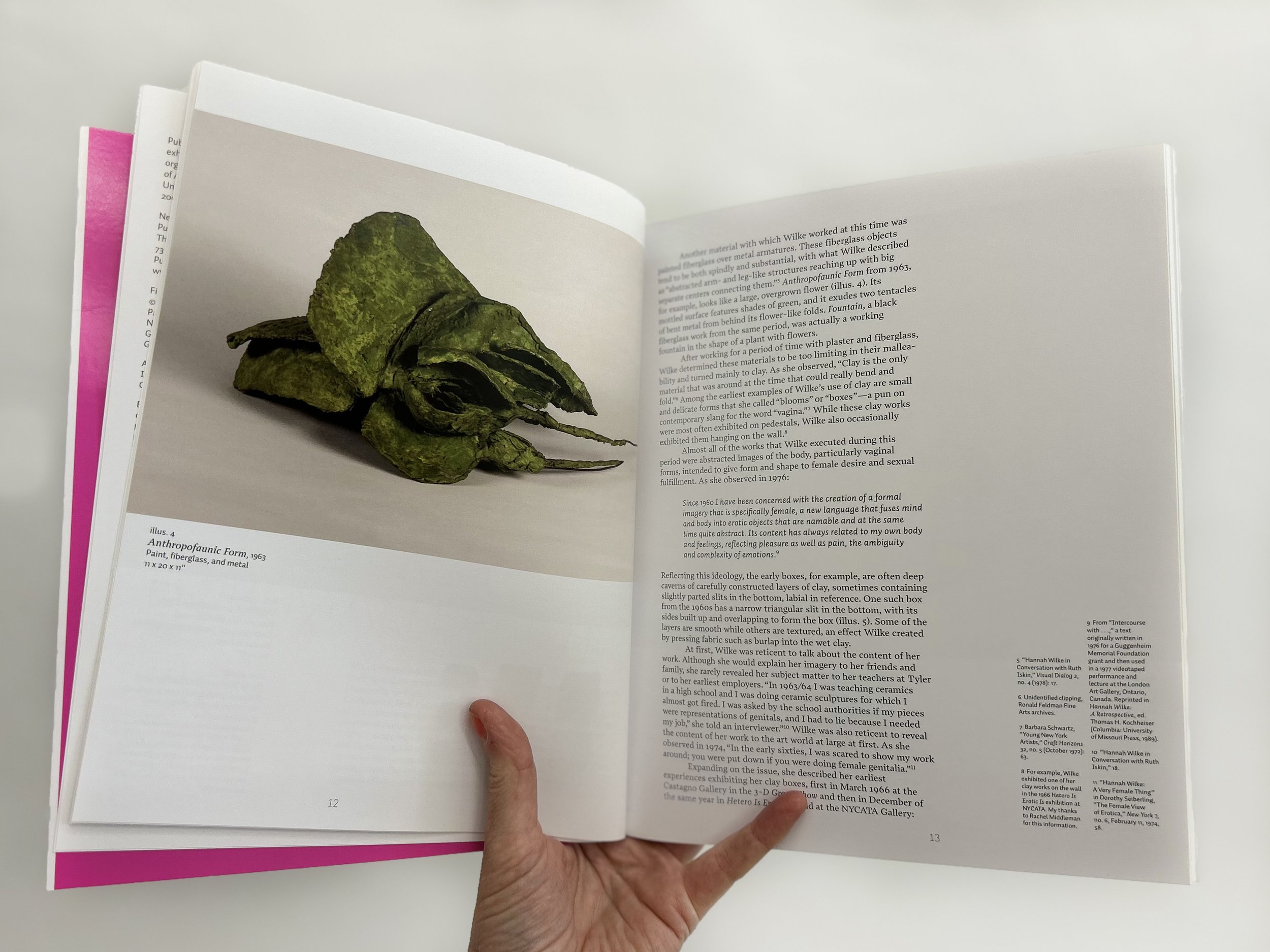 Image 5 of 8
Image 5 of 8

 Image 6 of 8
Image 6 of 8

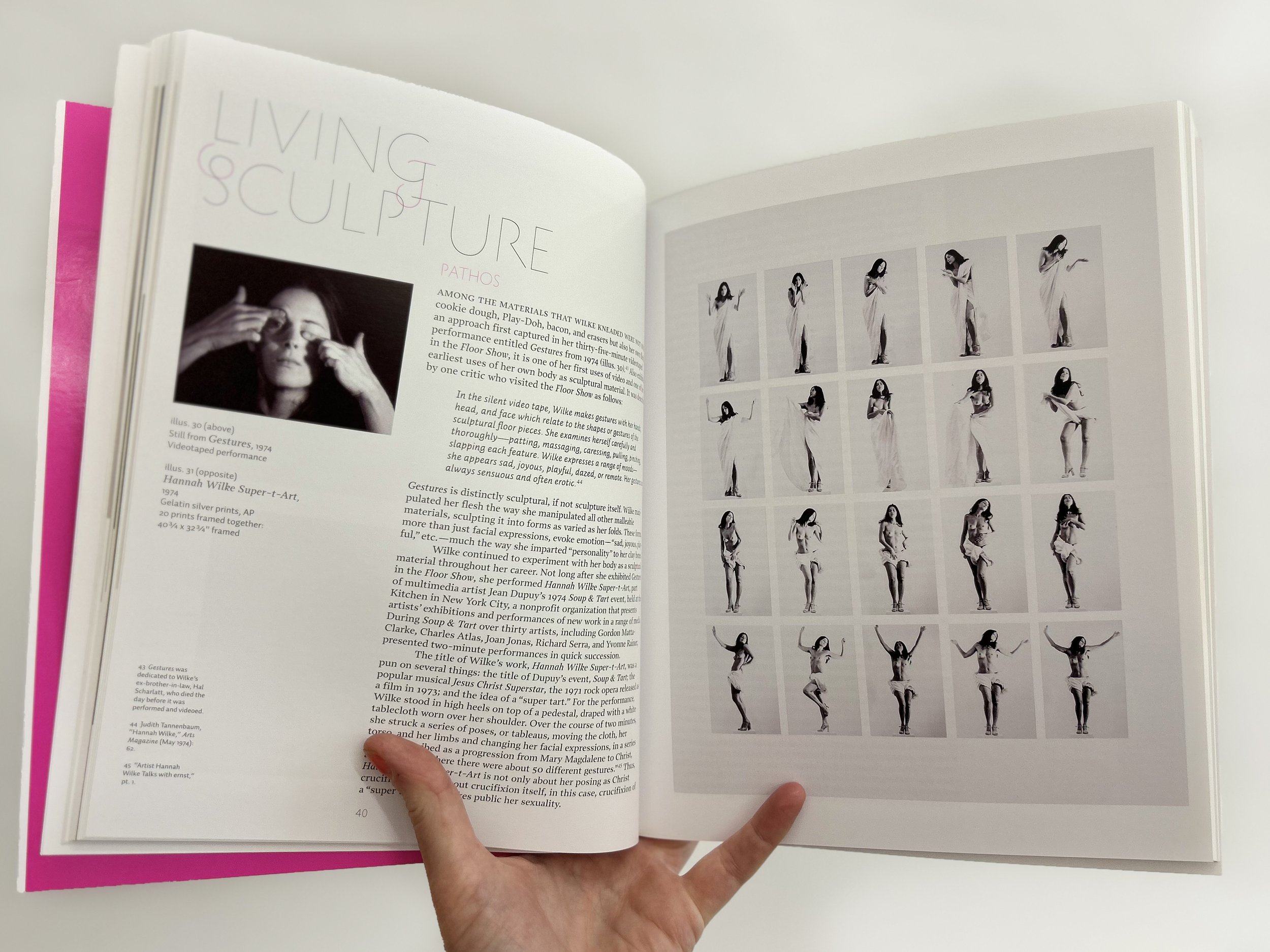 Image 7 of 8
Image 7 of 8

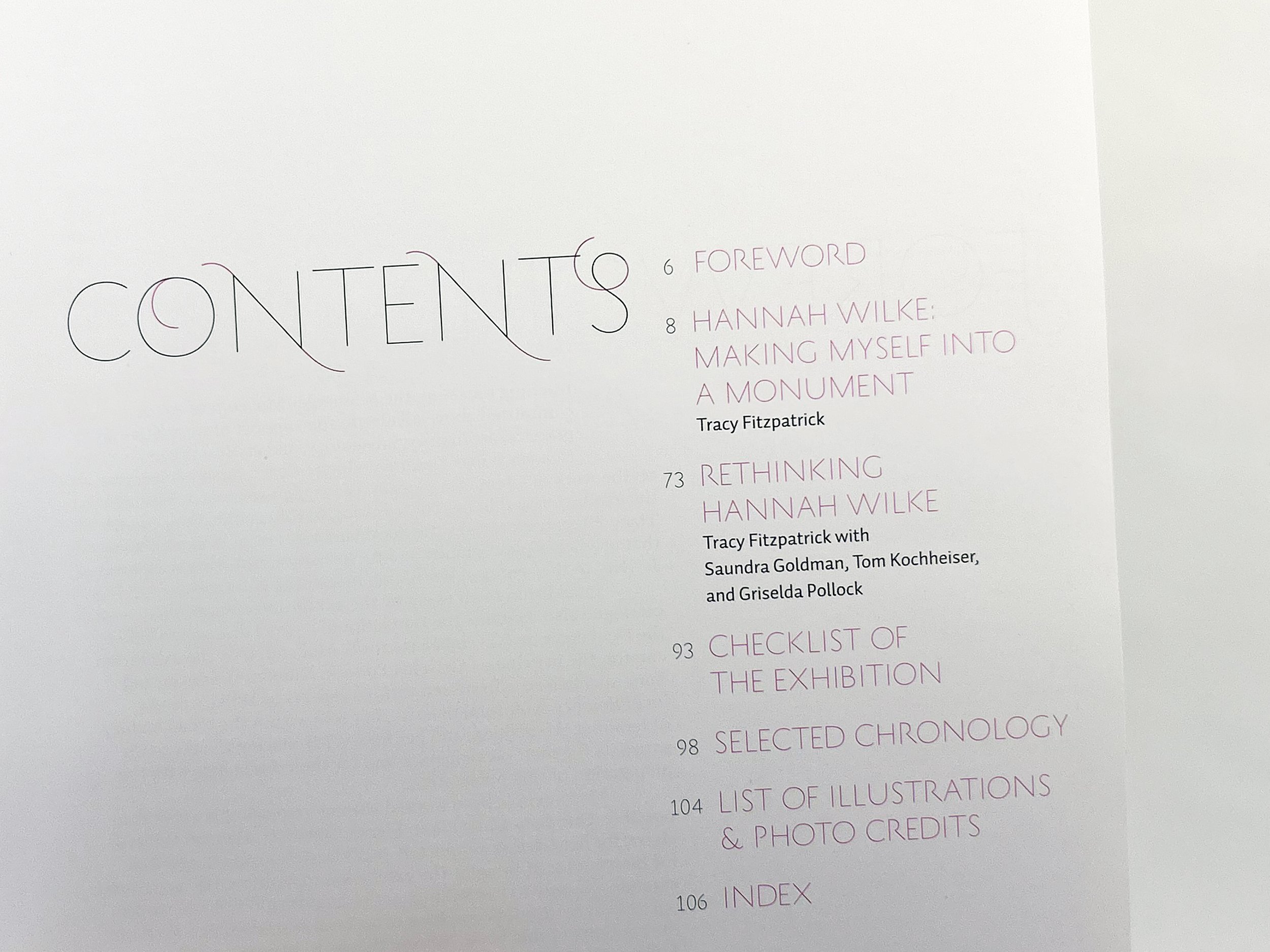 Image 8 of 8
Image 8 of 8









Hannah Wilke - Gestures (Out of Print)
Hannah Wilke: Gestures
Text by Tracy Fitzpatrick with Saundra Goldman, Tom Kochheiser, Griselda Pollock.
The act of folding is the salient gesture in the sculptures of American artist Hannah Wilke (1940-1993). Taking such materials as clay, bubble gum and Play-Doh, Wilke fashioned serial forms that folded inward or opened out with overtly labial sensuousness. Wilke often placed these objects in compromising situations--hinged with pins or glued to walls and boards, placed freely on the floor, always seemingly on the verge of disaster. Today she is famed for her many nude self-portraits, which have threatened to eclipse the sculptural basis of both the portraits themselves and her work in general. By emphasizing folding as a gesture, this catalogue--the first on the artist to appear in many years--unites Wilke's sculpture and photography under the rubric of performance, and the performing of material. With an abundance of color reproductions and critical commentary, Hannah Wilke: Gestures offers a fresh assessment of a pioneer in sculpture, feminist art and performance.
PUBLISHER
Neuberger Museum of Art
BOOK FORMAT
Paperback, 8 x 9.5 in. / 108 pgs / 58 color / 3 bw.
PUBLISHING STATUS
Pub Date 8/30/2010
STATUS: Out of print
FROM THE BOOK
"The ultimate expression of Wilke's sculptural priorities, and what critics have found so compelling as photographs and works of performance art, is Wilke's adoption of her own body as sculptural material--as what she called 'living sculpture.' Gesturing with her torso, hands, and face, Wilke turned her own body into art, producing some of the most radical and daring art of her time. Considering these works and others as rooted in a sculptural practice raises a range of new insights and potential sources, such as the tradition of living sculpture in the Greco-Roman world, and the connection between her works that investigate ideas about malleability and vulnerability and her heretofore undocumented proposals for fantastic, large-scale and public works of art. These connections demonstrate the line Wilke walked between her desire to investigate the transitory nature of art and life and her desire to create a lasting record of her own art and life, what she described as 'making myself into a monument.'"
Tracy Fitzpatrick, excerpted from her text to Hannah Wilke: Gestures.
Hannah Wilke: Gestures
Text by Tracy Fitzpatrick with Saundra Goldman, Tom Kochheiser, Griselda Pollock.
The act of folding is the salient gesture in the sculptures of American artist Hannah Wilke (1940-1993). Taking such materials as clay, bubble gum and Play-Doh, Wilke fashioned serial forms that folded inward or opened out with overtly labial sensuousness. Wilke often placed these objects in compromising situations--hinged with pins or glued to walls and boards, placed freely on the floor, always seemingly on the verge of disaster. Today she is famed for her many nude self-portraits, which have threatened to eclipse the sculptural basis of both the portraits themselves and her work in general. By emphasizing folding as a gesture, this catalogue--the first on the artist to appear in many years--unites Wilke's sculpture and photography under the rubric of performance, and the performing of material. With an abundance of color reproductions and critical commentary, Hannah Wilke: Gestures offers a fresh assessment of a pioneer in sculpture, feminist art and performance.
PUBLISHER
Neuberger Museum of Art
BOOK FORMAT
Paperback, 8 x 9.5 in. / 108 pgs / 58 color / 3 bw.
PUBLISHING STATUS
Pub Date 8/30/2010
STATUS: Out of print
FROM THE BOOK
"The ultimate expression of Wilke's sculptural priorities, and what critics have found so compelling as photographs and works of performance art, is Wilke's adoption of her own body as sculptural material--as what she called 'living sculpture.' Gesturing with her torso, hands, and face, Wilke turned her own body into art, producing some of the most radical and daring art of her time. Considering these works and others as rooted in a sculptural practice raises a range of new insights and potential sources, such as the tradition of living sculpture in the Greco-Roman world, and the connection between her works that investigate ideas about malleability and vulnerability and her heretofore undocumented proposals for fantastic, large-scale and public works of art. These connections demonstrate the line Wilke walked between her desire to investigate the transitory nature of art and life and her desire to create a lasting record of her own art and life, what she described as 'making myself into a monument.'"
Tracy Fitzpatrick, excerpted from her text to Hannah Wilke: Gestures.
